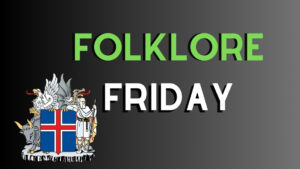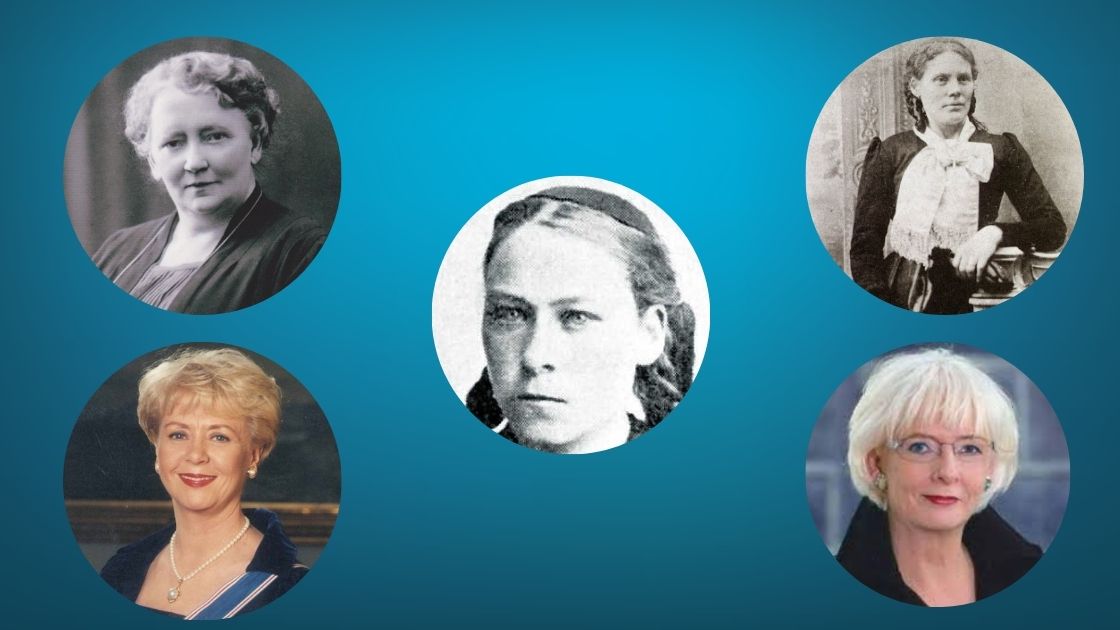

While there are certainly more than five trailblazing women in Iceland’s history, I thought it would be helpful to start off with these women first because they have made a significant impact on Iceland and the progression of the society for everyone. You might have heard of some of the women I’m featuring but there are others that you have probably never learned about.
Before I jump into speaking about each woman, I will first give a bit of history about Iceland regarding suffrage and the significant impact that Icelandic women’s organizations had in the country. These organizations were formed before women had the right to vote. After going over each of the phenomenal women’s backgrounds, I share a little timeline of significant moments in Icelandic history that are related to women rights and equal rights.
Next is the random fact of the episode and I will end off with the Icelandic word of the day. I found a lot of information on the Women’s history Archives website. The Archives was founded in January of 1975 by Anna Sigurðardóttir, Else Mia Einarsdóttir and Svanlaug Baldursdóttir. Since 1996 it has been a special entity within the National Library of Iceland. There is so much information there and I will have links to the website in the show notes if you want to check it out.
A Short History of Voting Rights in Iceland
I think it is important and super fascinating to share some history about Iceland and how the country being governed by Denmark played a significant role in the rights of women in the country. At the beginning of the 19th century Iceland did not have many people residing in the country. The ones that did live here were farmers, their wives and kids, people who worked as laborers and maids. There was not a middle class until later into the 20th century. That is significant because it is often thought that the middle class are the backbone of social movements. In fact from 1845, the right to vote for men in Iceland was limited to those of a certain age that paid taxes and had property.
That changed in 1903 but still that means that more than 50 years went by where only men with certain status in society had the right to vote. What is so interesting to me is that the Icelandic parliament discussed women’s suffrage more than once in the 19th century and most parliamentarians supported it. However, all bills that contained women’s suffrage were vetoed by Danish authorities. Those bills also proposed changes in the relationship between countries as well. I’m sure that had a lot to do with the bills being vetoed. I was surprised at how progressive parliament was back about this topic. And for those who are not aware, Iceland didn’t become a sovereign state until 1918 and declared independence in 1944.
The role of Women’s Organizations in Icelandic history
Iceland’s first women’s organization was founded in the countryside in 1869. It’s focus was to foster more unity and cooperation among women in the region. They also collected money to buy a knitting machine that all members could use.
Most women’s organizations at the time were focused on helping the sick and the poor. Iceland didn’t have a national healthcare system then and municipalities were barely providing any social help. By stepping in to help, these women organizations played a significant role in shaping the welfare state of the country. These organizations provided home care for the sick and created a healthcare center in Reykjavik.
Because women were only allowed to get the most elementary education from the established institutions at the time, Icelandic women decided to create their own private schools between 1874 and 1879.
Icelandic women gained the parliamentary vote in 1915, but the right was, however, blemished by the fact that only women over 40 years of age got the vote. Nowhere else in the world was women’s suffrage restricted in this particular way. Certain circumstances in Iceland contributed to this unique decision, and we shall take a closer look at them here. (In 1920 the franchise limits on women were lifted in accordance with the agreement in 1918 between Denmark and Iceland when the latter became a sovereign state).
1. Bríet Bjarnhéðinsdóttir (1856-1940)
- She was born in 1856 and lived until 1940
- Early advocate for women’s liberation and suffrage in Iceland
- Was an educated school teacher, graduated from a women’s school in 1880
- Bríet began working in Reykjavík from 1887.
- Starting in 1885, she wrote various articles for women’s rights under the signature AESA
- When she moved to the capital she held speeches for women’s rights. In 1888, she married the liberal editor Valdimar Ásmundsson.
- She founded a women’s society (1894),
- Managed a women’s magazine, Kvennablaðið (1895–1926),
- Co-founded a journalist’s society (1897)
- Managed a children’s magazine (1898–1903).
2. Ingibjörg H. Bjarnason (1867-1941)
- As a teenager, she moved to Reykjavík after her father died and attended Reykjavík Women’s College (Kvennaskólinn)
- She graduated from the college in 1882 and relocated to Denmark to study gymnastics. She was the first Icelander to do so.
- In 1903, she returned to the Women’s College as a teacher.
- Became involved in the women’s suffrage movement in Iceland in 1894
- In 1922 she was the first woman to be a parliamentarian
- After retiring from politics, she was still active in the movement for women´s liberation
- She became founding chairperson of the women’s organisation Kvenfélagasambands Íslands in 1930.
Sigríður Tómasdóttir (1871 - 1957)
- Born in Brattholt in 1874 and grew up on her family’s sheep farm.
- No formal education but was well read and artistic
- Interestingly, she and her sisters would guide visitors to the waterfalls in her area.
- Fought tooth and nail to save Gullfoss waterfall from destroyed
- We have her to thank for being able to enjoy the gorgeous Gullfoss waterfall
Vigdís Finnbógadóttir (1930 -)
- Studied French and French literature in Paris
- Has a BA in French and English, as well as a Professional Graduate Certificate in Education, at the University of Iceland
- She taught French and French drama at the University and worked for the Reykjavík Theater Company.
- She married a physician in 1954, but divorced in 1963,
- She became the first single woman in Iceland to adopt a child at the age of 41 and the first single mother to be elected as head of state
- World’s first female who was democratically elected Head of State
- Served for 16 years (she also remains the longest-serving elected female head of state of any country to date)
- Till this day, she is still Iceland’s only female President
5. Jóhanna Sigurðardóttir (1942 -)
- Worked as a flight attendant for Loftleiðir Icelandic Airlines from 1962 to 1971. That airline eventually merged with Icelandair
- She was an active labor union member and served twice as the chairperson for the board of the Icelandic Cabin Crew Association (1966, 1969)
- After taking an office job in 1971 in Reykjavík, she sat on the board the Commercial workers union
- In 1978, she was elected to Icelandic Parliament as a member of the Social Democratic Party
- She was becoming known for advocating for social justice and strengthening Iceland´s welfare system.
- In 1987 she was named Minister of Social Affairs. She held that role until 1994
- She campaigned for the leadership role in the Social Democratic Party but was not successful. It very much upset her and she is said to have raised her fist and said Minn tími mun koma!” (My time will come)
- so she formed her own party called the National Movement. Later on, she reconciled with her former party in 1999.
- Fortunately for her, the 2008 financial crisis worked in her favor because she was seen as a voice of calm during this period.
- After the resignation of Prime Minister at the time, conserative Geir Haarde, Jóhanna, the Social Democrats and the Left Greens formed a caretaker minority government.
- Jóhanna was formally sworn in as the prime minister on February 1, 2009 and became Iceland´s first female Prime Minister
- In 2010, same sex marriage became legal in Iceland. Jóhanna and her partner married simply by converting their registered partnership over to married.
- By doing this she became the world’s first openly LGBT head of government
- She was listed on Forbes as one of the 100 most powerful women in the world
- During her time as Prime minister, Iceland’s economy got back to a stable place after the financial crisis
Random fact of the episode - Women's Day Off
Up until 1975, women that worked outside of the home earned less than 60% of what men earned.
In 1975, the United Nations announced that year would be International Women’s Year. A feminist group in Iceland called Redstockings, which I assume they were inspired or even in affiliation with Redstockings of the Women’s Liberation Movement that was founded in 1969 in NYC, had the idea of striking or ´taking a day off´ as a way to honor that year. They felt that taking a day off sounded more appealing to the masses and would result in more women participating. Plus, some women might be fired if they were to strike but they could request a day off.
The fateful day was October 24th, 1975. 90% of women in Iceland took the day off, or essentially went on strike to “demonstrate the indispensable work of women for Iceland’s economy and society”.
Women that had jobs did not show up for work and those that were normally at home, did not do any housework or child rearing for the whole day. Men had to take their children to work as well as scramble to feed themselves and the kids. I’m sure most kids ate hotdogs that day.
The following year, Iceland’s parliament passed a law guaranteeing equal pay.
Icelandic word of the episode
Kosingaréttur
Kosing – vote
Réttur – right